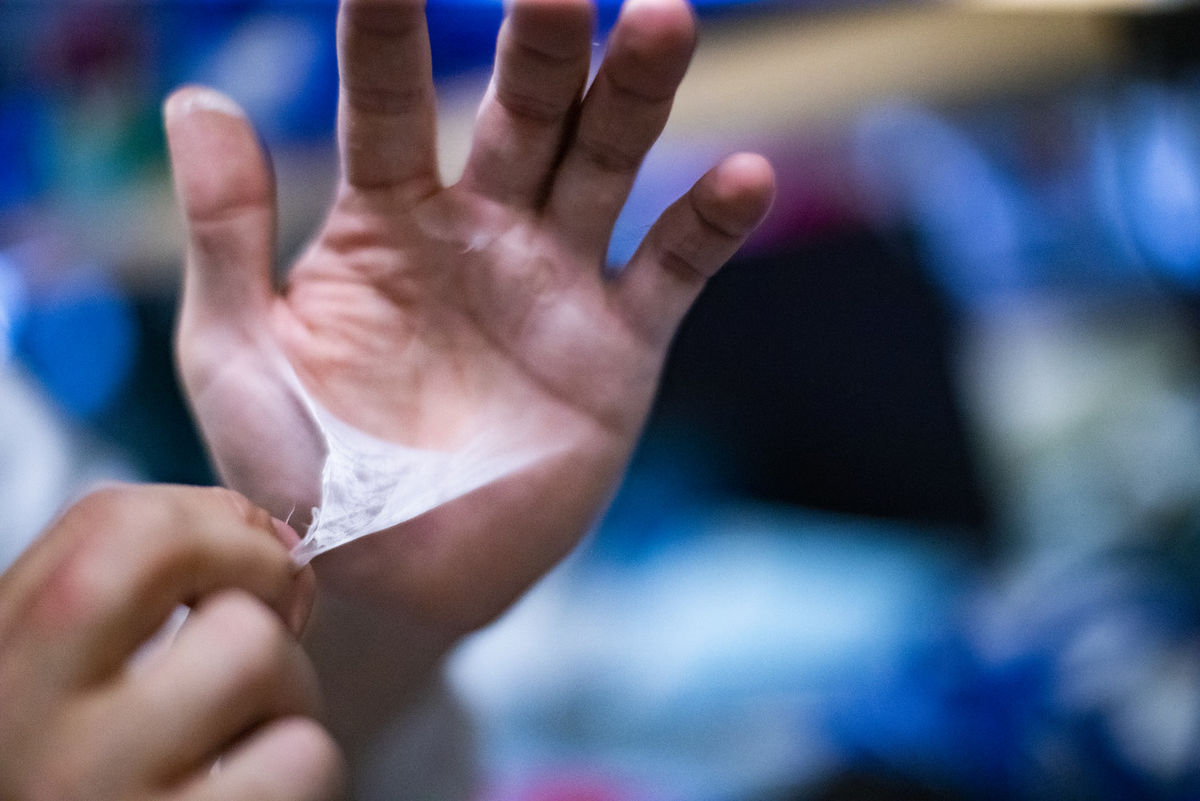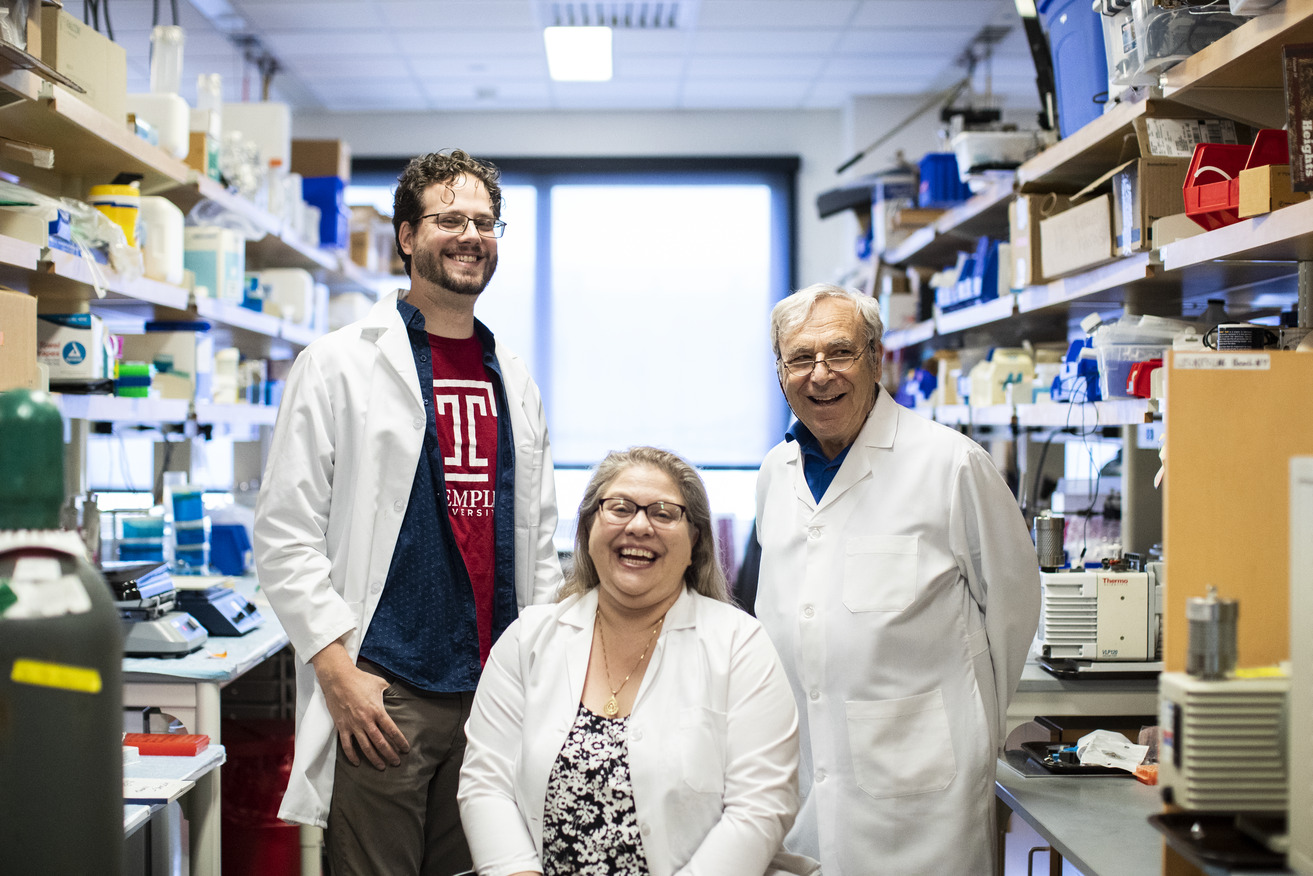Faculty members Peter Lelkes, Yah-el Har-el and Jonathan Gerstenhaber from Temple University’s College of Engineering have been working for over a decade to bring us closer to the future of wound care. The research team has discovered a way to engineer soy proteins into a nanofibrous wound dressing, called OmegaSkin, which could change the lives of patients suffering with major ailments such as severe burns, diabetic wounds, bed sores and other large lesions.
OmegaSkin interacts with cells in the wounded skin and their extracellular matrix proteins and aids in healing the wound with minimal to no scarring. Wound dressings made of OmegaSkin also enhance the regeneration of specific constituents found in the intact skin tissue, such as hair follicles and sweat glands—something not seen in traditional wound care.
“We’ve come a long way in our research and developing the product,” said Lelkes, the product’s chief inventor and current chair of the Bioengineering Department at Temple.
The idea first came to Lelkes more than a decade ago when he was eating a meal in China with a friend and noticed the skin-like texture on the outside of his yuba, which is made from curdled soybeans. Since soy is a complex mixture of proteins that contains many of the building blocks and peptides needed to help major organs regenerate, the observation sparked a revelation about how to repair skin, the human body’s largest organ.
Gerstenhaber, now an assistant professor in the Bioengineering Department, started out as a student working with Lelkes about 12 years ago. The pair worked with Har-el, then a postdoctoral fellow, now an associate professor in the Bioengineering Department, to start researching soy properties and the ways they enhance healing in animals. Their main priority was finding a way to impact people’s lives in a positive way. “Every time I can make OmegaSkin an iota better, I can make someone’s life better, too,” noted Gerstenhaber.
Nothing like this product currently exists on the market. “It was important to us to avoid animal proteins as a source, both due to the potential ethical and safety issues, but also because we wanted something natural with a robust shelf life,” explained Gerstenhaber. Sticking to a natural protein source ensures that any cells attempting to heal the wounds would be able to interact with the bandage in a productive way. The extremely thin nanofibers also provide an enormous surface area that the cells can use, either to grow on, or to fill in with their own proteins and signaling molecules. [node:pullquote]
The soy-based wound dressing can be packaged and applied in two ways: through a typical gauze-like package, or through a portable electro-spinner. Using the portable spinner, medical professionals can administer the fibers directly to the wound, allowing them to add antibiotics, antimicrobials and other solutions to bind with the fibers and aid in additional healing specific to patients’ needs.
The researchers have also developed a water-based approach for applying the product using the portable spinner, as opposed to toxic solvents that are typically used. This development makes the product safer and more convenient to manufacture.
Using the portable spinner and the earlier toxic solvents, the fibers would need to be precisely applied from a very specific distance away so as to not create an undesired result. “The water-based system changes all of that,” said Har-el. The product is portable, easy to use and inexpensive to produce, making it a great option for ambulances, third-world countries, military applications and anywhere emergency care is needed.

The ultra thin OmegaSkin helps regenerate sweat glands and hair follicles to heal wounds with minimal to no scarring. (Photography by Ryan S. Brandenberg)
With the help of a new startup company called NeuEsse and its founder and CEO, Joseph Connell, the team hopes to take OmegaSkin through FDA approval and get it on the market as soon as possible.
Connell’s interest in this product is motivated by personal experience. At the age of 10, he burned more than 30% of his body and was told he might never walk again. He notes how drastically this product could have changed his life if it had existed years ago.
Patients with burns need skin grafting, a procedure that takes healthy skin from other parts of the body, prolonging their suffering and adding to their wounds. Connell’s right leg, which was burned to the bone, was repaired with 360 deep-skin grafts from his thigh. OmegaSkin would eliminate the need for skin grafting and not only save a life but improve health outcomes.
“It’s not a product, it’s a mission,” noted Connell on explaining how imperative it is to bring soy-based skin to market. “Soy costs about $12 to $16 per bushel. It’s hard to imagine that $12 could potentially save or alter someone’s life,” he added.
OmegaSkin was entered into the Soy Innovation Challenge sponsored by the United Soybean Board, where NeuEsse and the Temple team placed third out of 69 worldwide applicants and won $25,000. The team is now working with commercialization partners to scale up production and complete their FDA submission, but the work will continue after receiving FDA approval. Temple plans to continue to serve as scientific advisors as NeuEsse investigates further applications for their groundbreaking product.
“We also have the ability to take this soy skin into animal and veterinary health, dermatology, and aesthetic beauty,” Connell said. “The more we research soy and see the regenerative aspects of it, the more we want to look into developing the next product.”

